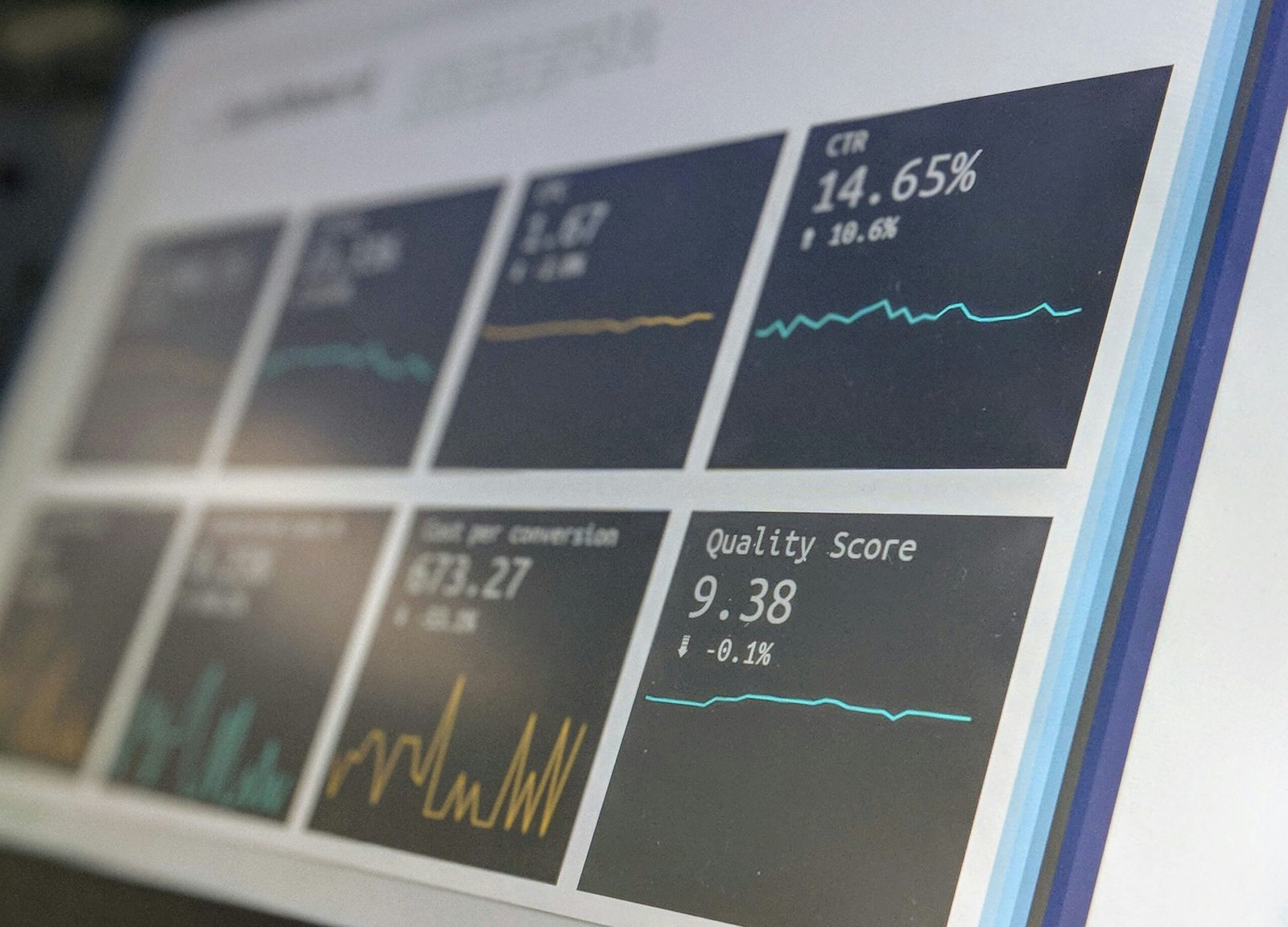Transforming Education with Big Data: Enhancing Learning Experiences in 2024
 Photo by Mika Baumeister on Unsplash
Photo by Mika Baumeister on Unsplash Introduction to Big Data in Education
Big data refers to the vast volumes of data generated through various digital processes and social media exchanges. In the field of education, it encompasses the data collected from student information systems, online learning platforms, and social networking sites associated with educational purposes. The application of big data analytics in education is transforming the way educational institutions operate and how students learn, providing profound insights that can lead to more personalized, efficient learning experiences.
Educational institutions are leveraging big data analytics to gain valuable insights into student performance, learning patterns, and operational efficiency. The use of big data technology in education began to take shape in the early 21st century, paralleling advancements in data science and the increasing digitization of educational resources. Literature points to various instances where educational data mining and learning analytics have provided actionable insights, fostering a more adaptive and supportive learning environment.
The primary objective of harnessing big data in education is to enhance the learning and teaching experience. Through rigorous data analysis, educators can identify trends and patterns that may not be visible through conventional methods. For instance, by analyzing a blend of historical data and real-time data, educators can personalize learning experiences to cater to individual student needs, thereby improving engagement and success rates. Additionally, big data can optimize administrative processes, leading to cost savings and higher operational efficiencies.
As we delve further into the digital era, the significance of big data in education continues to expand. It enables a data-driven approach that facilitates informed decision-making and strategic planning. By understanding the implications of these vast data sets, stakeholders can make educated changes that positively impact both teaching methodologies and student outcomes. Consequently, educational institutions that effectively utilize big data are better positioned to prepare students for future challenges and successes.
The Current State of Education and Big Data
In recent years, the integration of big data within the realm of education has seen substantial growth. This progression has enabled educational institutions to tailor learning experiences and improve operational efficiencies. According to a report by MarketsandMarkets, the global education sector’s big data market size is projected to grow from USD 14.63 billion in 2020 to USD 33.46 billion by 2025, reflecting the escalating significance of data-driven decision-making in education.
Universities and schools worldwide are leveraging big data analytics to identify patterns and trends that can significantly enhance student engagement and outcomes. For instance, the University of Alabama has successfully employed a predictive analytics system to boost student retention rates. By analyzing data on student performance, attendance, and engagement, the university can identify at-risk students and implement timely interventions. This proactive approach has led to a noticeable increase in the university’s retention rates over recent years.
A case study of Georgia State University further illustrates how big data can revolutionize education. The university has implemented a comprehensive data analytics system that tracks over 800 alerts related to student performance, guiding advisors to students who need assistance. As a result, Georgia State has seen a 22% increase in graduation rates and a significant reduction in the achievement gap for minority students. This seamless integration of big data into educational practices underscores the transformative potential of analytics.
Additionally, K-12 schools are increasingly embracing big data to improve instructional methodologies and personalize student learning experiences. For example, Montgomery County Public Schools in Maryland have utilized data analytics to refine their curriculum and foster individualized instructional strategies. By analyzing data from standardized tests, classroom assessments, and other metrics, educators can tailor their teaching approaches to meet the diverse needs of their students more effectively.
Through these examples, it is evident that big data is not merely a supplementary tool but a central component in reshaping educational landscapes. The current state of education demonstrates a tangible commitment to harnessing the power of data analytics, leading to more informed decision-making processes and, ultimately, better educational outcomes for students across various levels of learning.
Personalized Learning Experiences
In the evolving landscape of education, big data emerges as a transformative force, especially regarding personalized learning experiences. By effectively utilizing data analytics, educators can tailor educational content to meet the unique needs of individual students, thereby enhancing learning outcomes.
Technologies such as adaptive learning platforms are at the forefront of this transformation. These platforms leverage advanced algorithms to analyze students’ performance in real-time, adjusting instructional content dynamically in response to their learning pace and comprehension levels. For example, platforms like DreamBox and Knewton have shown remarkable efficacy in customizing math and science lessons, thereby significantly improving student engagement and performance.
Additionally, learning management systems (LMS) like Canvas and Moodle incorporate big data analytics to offer personalized learning paths. These systems analyze a myriad of data points, from quiz scores to participation rates in discussion forums, to identify students’ strengths and areas for improvement. This comprehensive analysis allows instructors to provide targeted resources, such as supplementary materials or tailored feedback, ensuring each student receives the support they need to succeed.
Moreover, education-specific artificial intelligence tools, such as IBM Watson Education, use natural language processing and machine learning to develop personalized education plans. By evaluating vast amounts of student data, IBM Watson can recommend specific learning activities, assist in setting individualized goals, and even predict future performance trends.
Successful implementations of these tools underscore their potential. In a case study involving a high school in California, the integration of an adaptive learning platform led to a 20% increase in student proficiency in mathematics within a year. Similarly, a European university using an AI-driven LMS reported a dramatic reduction in dropout rates, attributing the success to the system’s capability to provide personalized academic support and early intervention strategies.
As we witness the educational sector’s data-driven evolution, it becomes clear that the power of big data is pivotal in fostering personalized learning experiences. Leveraging these advanced technologies and tools helps create a more inclusive and effective educational environment, tailored precisely to the needs and potential of each student.
Predictive Analytics for Student Success
In the contemporary educational landscape, predictive analytics has emerged as a pivotal tool in identifying at-risk students and suggesting timely interventions to enhance their academic outcomes. By examining patterns and trends within large datasets, educational institutions can foresee potential challenges that students may encounter and proactively offer support, thus improving both student retention and performance.
The potency of predictive analytics lies in its ability to analyze a multitude of variables, such as attendance records, assignment submissions, quiz performances, and even extracurricular activities. For instance, when a student consistently misses classes or performs poorly in assignments, predictive algorithms can flag these patterns as red flags. Educational psychologists and counselors can then intervene with tailored support mechanisms to address these issues before they escalate.
Take, for example, Georgia State University, which has been leveraging predictive analytics to significantly increase its graduation rates. The university monitors over 800 different risk factors and assigns academic advisors to meet with students identified as at-risk. This data-driven approach has led to a 22% increase in graduation rates since its implementation, demonstrating the tangible benefits of predictive analytics in higher education.
Moreover, K-12 education sectors are also adopting predictive models to assist teachers in early identification of students who may need additional help. Schools integrate data from various sources, such as standardized test scores and classroom behavior reports, to forecast academic performance and behavioral issues. Identified students receive personalized learning plans designed to address their unique needs, thereby fostering a more inclusive and supportive learning environment.
In essence, predictive analytics not only enhances the efficiency of educational institutions but also personalizes the learning experience, ultimately leading to improved academic success. By harnessing the power of data, educators can turn insights into actionable strategies, ensuring that every student has the opportunity to achieve their full potential.
Data-Driven Curriculum Development
Big data is revolutionizing how educational curricula are developed and refined. By analyzing vast amounts of student performance data, educators and curriculum developers can uncover significant trends and pinpoint gaps in learning. This comprehensive data analysis allows for the creation of data-driven curricula that are adaptable and responsive to the unique needs of students.
One of the key benefits of utilizing big data in curriculum development is the ability to make informed decisions concerning educational content. With insights derived from large datasets, educators can identify which areas of the curriculum need enhancement and which aspects are effectively facilitating student learning. This targeted approach ensures that educational content remains relevant and aligns with the evolving academic landscape.
Moreover, understanding student learning patterns through data analysis can lead to personalized learning experiences. By recognizing the strengths and weaknesses of individual students, educators can tailor the curriculum to address specific learning needs. Such customization not only promotes student engagement but also significantly enhances learning outcomes.
Another significant advantage of a data-driven curriculum is the optimization of resources. By prioritizing areas that require immediate attention or improvement, educational institutions can allocate their resources more efficiently. This strategic use of resources ensures that students receive the best possible support and that educational content is delivered where it is most needed.
Ultimately, as educational institutions continue to leverage the power of big data in curriculum development, they will be better equipped to foster an environment that supports continuous learning and development. Big data’s insights allow for curricula that not only address the current educational demands but also anticipate future needs, ensuring that students are well-prepared for the challenges that lie ahead.
Enhancing Teacher Performance with Big Data
In recent years, the educational landscape has been significantly transformed by the advent of big data. One impactful application of big data in education is in the realm of teacher performance. Analyzing vast amounts of data enables school administrators and teachers to gain insights into teaching effectiveness, leading to improvements in instructional methods and overall educational outcomes.
Big data analytics tools, such as learning management systems (LMS) and educational data mining platforms, can collect and analyze a multitude of data points from classroom activities. These tools monitor student engagement, comprehension levels, and even offer predictive analytics about student performance. For instance, systems like Canvas and Blackboard gather data on student interactions with course materials and assessments, providing a detailed overview of how effectively different teaching strategies are working.
An example of a big data analytics tool is the Edthena platform, which allows for video-based teacher observations and collaborative feedback. Teachers can upload classroom videos, and automated algorithms analyze these recordings to generate data-driven feedback. This feedback includes metrics such as the time spent on different types of activities and the interaction patterns between teachers and students. This actionable data can then be used by educators to refine their classroom management and instructional strategies effectively.
Furthermore, big data supports personalized professional development for teachers. By identifying specific areas where teachers excel or struggle, customized training programs can be created. For instance, a teacher who shows weaker performance in facilitating student engagement might receive targeted modules or workshops to enhance their skills in this area. This individualized approach not only contributes to the professional growth of teachers but also positively impacts student learning experiences.
Ultimately, the integration of big data into monitoring teacher performance creates a continuous feedback loop. Educators are equipped with the tools and insights needed to adapt their teaching approaches in real-time, fostering an engaging and effective learning environment. As a result, the application of big data stands as a powerful mechanism to elevate the quality of education by enhancing teacher performance and instructional effectiveness.
Ethical Considerations and Data Privacy
As the integration of big data into education accelerates, the ethical considerations and data privacy issues become increasingly paramount. Ensuring that the implementation of these technologies does not compromise the privacy and security of both students and teachers is critical. Regulations such as the General Data Protection Regulation (GDPR) in Europe and the Family Educational Rights and Privacy Act (FERPA) in the United States lay the groundwork for protecting sensitive information in educational settings.
Big data’s potential to revolutionize education hinges on its responsible use. Ethical data usage requires institutions to practice transparency about what data is collected, how it is used, and who has access to it. Establishing robust data governance policies can prevent misuse and unauthorized access to data, fostering trust among educational stakeholders. Opt-in consent, where students and parents agree to the collection and use of data, is a best practice that ensures participation is voluntary and informed.
Furthermore, anonymization and data encryption are key techniques for preserving privacy while still gaining valuable insights from large datasets. When data is anonymized, individual identities are obscured, reducing the risks of personal information exposure. Encrypted data ensures that even if unauthorized access occurs, the information remains protected and unintelligible to malicious entities.
Best practices in data privacy also involve regular audits and assessments to ensure compliance with current laws and regulations. Educational institutions must stay updated with evolving standards and implement adjustments as needed. Training programs for faculty and staff on data privacy and ethical data use can further mitigate risks and encourage a culture of Responsibility.
By addressing these ethical considerations and prioritizing data privacy, the educational sector can harness the benefits of big data while safeguarding the rights and confidentiality of its participants. This balance is essential for building a future where technology enhances rather than undermines the learning experience.
Future Trends and Possibilities
As we move further into the digital age, big data continues to revolutionize the educational landscape. By 2024, the integration of big data in education is poised to evolve in unprecedented ways, offering both opportunities and challenges. Emerging trends suggest a growing emphasis on personalized learning experiences powered by advanced data analytics. These sophisticated systems can analyze vast amounts of student data to tailor educational content to individual learning styles, ensuring a more engaging and effective learning journey.
One significant trend is the rise of predictive analytics in education. Institutions will increasingly rely on predictive models to identify at-risk students, optimize curricula, and improve overall institutional performance. By harnessing the power of big data, educators can proactively address potential issues before they escalate, fostering a supportive and responsive learning environment.
Additionally, the integration of big data with artificial intelligence (AI) and machine learning (ML) is expected to gain momentum. AI-driven learning platforms can provide real-time feedback, adapt to student needs dynamically, and offer personalized recommendations. These innovations promise to create more inclusive and equitable educational opportunities, bridging gaps for students from diverse backgrounds.
However, the path forward is not without challenges. Issues such as data privacy, ethical considerations, and the digital divide must be carefully managed to ensure that the benefits of big data are realized without compromising student rights or exacerbating inequalities. Implementing robust data governance frameworks and promoting digital literacy will be crucial in addressing these concerns.
In shaping the future of education, big data stands as a transformative force. By continuously leveraging data-driven insights, educational institutions can enhance learning experiences, drive innovation, and prepare students for the demands of an ever-evolving world. As we look to 2024 and beyond, the continued exploration and responsible use of big data promise to unlock new potentials in the realm of education, creating a brighter and more informed future for all learners.
















Tidak ada komentar